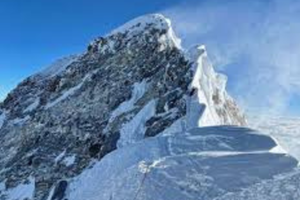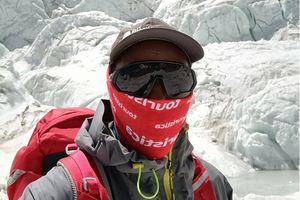
Mountain climbing is the ultimate test of the body, pushing its limits to achieve the seemingly impossible in harsh conditions and high altitudes.
The thrill of summiting a mountain is unparalleled for mountaineering enthusiasts.
The breathtaking beauty of being high up near the clouds, away from the world's noise, allows one to marvel at the wonders of nature and forget the hardships endured in pursuit of their passion.
It is the ultimate test of the body, pushing its limits to achieve the seemingly impossible in harsh conditions and high altitudes.
But what exactly does it entail?
The Art of the Climb
Mountain climbing isn't just about reaching the summit. It's a meticulous dance with the environment. Climbers meticulously plan routes, considering weather patterns, terrain, and potential hazards like avalanches or rockfalls.
They become masters of ropework, using complex knots and rappelling techniques to navigate treacherous sections. Every step requires focus, precision, and a deep understanding of their equipment.
For a mountaineer, mental strength is crucial for accomplishing the task at hand and making decisions that allow one to push their body further.
As altitude increases, mental fortitude ensures stability and focus. To prepare for the unknown terrain and unique experiences each climber faces, physical preparation is essential to build endurance.
This includes walking, running, cycling, and training to target key muscle groups. In addition to indoor gym workouts, climbing small hills in higher altitude areas on weekends is recommended to test lung capacity.
Above all, maintaining a clean diet is essential. Below are three basics of mountain climbing: mastering techniques, equipment, and environmental awareness to minimise impact and preserve natural beauty.
The Dangers of Mountain Climbing
Investing in good gear is crucial to ensure a better experience, as it helps you prepare for extreme weather conditions. While the allure of mountain climbing is undeniable, the dangers are significant and ever-present.
1. Physical Hazards:
- Falls: The risk of falling is one of the greatest dangers, often due to equipment failure, human error, or unstable terrain. Bad weather frequently leads to loss of visibility, and unstable ground may cause one to slip and fall.
- Altitude Sickness: Despite extensive training, mountaineering poses grave dangers. Altitude sickness can occur at 8000 feet, with symptoms appearing within 12 to 24 hours at high altitudes. As you ascend, your body experiences lower air pressure, decreasing oxygen levels. Less oxygen in your blood results in less oxygen in your brain, causing your brain to function at a lower speed, disorienting your cognitive performance and destabilising your mood. This condition worsens as you climb higher. Rapid ascent to high altitudes can cause symptoms such as headaches, nausea, and, in severe cases, life-threatening conditions like pulmonary or cerebral oedema.
2. Weather and Environmental Challenges:
- Extreme Weather: Climbing in hot environments increases the risk of heat stroke and fainting. Natural disasters such as earthquakes or avalanches often result in serious consequences, including loss of life or the entrapment of mountaineers. Sudden storms, extreme colds, and high winds can lead to hypothermia or frostbite.
3. Psychological and Physiological Strain:
- Exhaustion: The physical demands of climbing can lead to extreme fatigue, affecting decision-making and safety.
- Isolation and Stress: Insufficient training increases the risk of injuries and can slow down your group. Additionally, lack of oxygen, equipment failure, and dehydration are some dangers that may arise during mountaineering. The remote and challenging nature of climbing can also cause significant mental and emotional strain. Therefore, climbers are often advised to hire guides, often known as shepherds, who can assist them by carrying their luggage and extra oxygen tanks in case of breathing complications during a challenging climb.
The Thrill of the Peak
The allure of mountain climbing remains strong despite the risks involved. The sense of accomplishment upon reaching the summit, the breathtaking panoramas that reward the efforts, and the deep connection with nature all contribute to the unparalleled thrill. Additionally, there is a strong sense of camaraderie among climbers, a community forged in shared experiences and a deep respect for the mountain's power.
So, is mountain climbing for you?
Mountain climbing might be for you if you are physically fit, have a healthy respect for nature's power, and seek a unique challenge. However, it's crucial to start slowly with proper training and guidance. Local climbing gyms and organised expeditions are excellent entry points. Remember that the mountains will always be there, waiting for you to conquer them, but your safety should always come first.
Climbers are advised to have good UV-ray-blocking goggles to prevent snow blindness, which can cause severe pain, irritation, and eye tearing. When climbers experience mild cases, they should alert their guides, who can advise them to ascend slowly with proper acclimatisation. In severe scenarios, the guide may advise the climber to descend to lower altitudes to stabilise the body and regain their senses.






